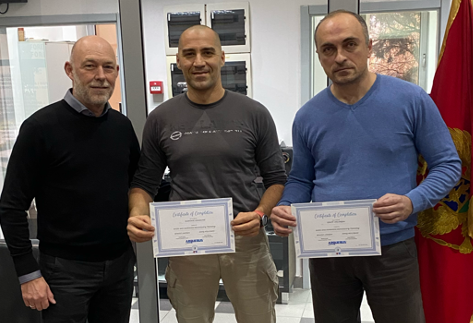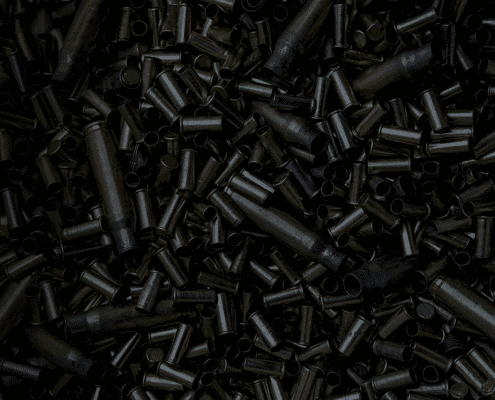 https://arquebus.uk/wp-content/uploads/2025/11/blog-cropped-v1-scaled.jpeg
1695
2560
Glenn Lawrence
https://arquebus.uk/wp-content/uploads/2022/02/Asset-1arquebus_logo.svg
Glenn Lawrence2025-11-24 09:38:142025-11-24 09:48:05Advancing Forensic Excellence in Montenegro: Ballistic Shooting Scene Incident Reconstruction Training
https://arquebus.uk/wp-content/uploads/2025/11/blog-cropped-v1-scaled.jpeg
1695
2560
Glenn Lawrence
https://arquebus.uk/wp-content/uploads/2022/02/Asset-1arquebus_logo.svg
Glenn Lawrence2025-11-24 09:38:142025-11-24 09:48:05Advancing Forensic Excellence in Montenegro: Ballistic Shooting Scene Incident Reconstruction TrainingNational legislative frameworks (NLFs) define the legal norms related to small arms, light weapons and their ancillaries (SALW), supporting a national SALW control strategy (NSCS) by enabling jurisdictions to regulate the legal activities surrounding SALW throughout their lifecycle whilst preventing their illicit manufacture, trafficking and misuse.
We’re delighted to talk to Paul James, Arquebus Chairman and co-founder, to discuss the vital role that NLFs play in a NSCS and how intelligence-led policing (ILP) can facilitate the effective enforcement and development of an NLF.
§
In 2021 alone, an estimated 215,260 people died from SALW-related homicide, accounting for 47% of homicides recorded globally (UNODC, 2023). Due to their lethal potential, the vast majority of SALW are considered ‘controlled items’, being subject to state control throughout their lifecycle.
National legislative frameworks (NLFs) underpin a NSCS, providing legal control of SALW in all their aspects within a jurisdiction. The overall aim of NLFs is to define and regulate legal activities surrounding the manufacture, transfer, possession, and use of SALW, and prevent their illicit manufacture, trafficking and misuse.
Whilst NLFs vary in scope and restrictiveness, almost all jurisdictions have some sort of legal control regime related to SALW. These typically consist of laws, regulations and policies which work together as part of a NLF in the following ways:
- Legislation sets the overarching legal framework on SALW by legally defining weapons, their legal categorisations and determining the basic rights and restrictions associated with their manufacture, transfer, possession, and use, as well as stipulating any requirements for SALW licensing and registration.
- Regulations operationalise these laws by outlining how to properly implement them. These typically include detailing enforcement and criminal justice measures like sentencing protocols, as well as the procedures and technical standards necessary for practical application, such as physical security and storage procedures and marking protocols.
- Policies establish the priorities and strategic direction for SALW control, guiding the development and enforcement of laws and regulations. For example, a jurisdiction may implement a SALW collection and destruction programme as part of an Armed Violence Reduction (AVR) policy.
Law enforcement agencies (LEAs) are central to supporting a NLF, working to detect, investigate, and prevent contraventions of laws and regulations related to SALW. LEAs also play an important role in the evidential process, cooperating with prosecutors to compile court-admissible evidence against criminal offenders to enforce a NLF, whilst gathering key intelligence to inform investigations and further develop laws, regulations and policies to help prevent SALW criminality from happening in the first place.
Arquebus talks to Paul James, Arquebus Chairman and co-founder, to discuss the role that NLFs play in a NSCS and how ILP can facilitate the effective enforcement and development of an NLF.
§
Welcome Paul. Please introduce yourself to our readers and briefly explain your experience in SALW control.
My name is Paul James, and I’m the Executive Chairman of Arquebus Solutions. I originally co-founded Arquebus in 2012 and was CEO of the business up until 2021. For those who don’t know, Arquebus is a business dedicated to the reduction of SALW misuse and since its inception, the team at Arquebus has helped more than 50 countries globally to tackle SALW criminality.
Prior to that, I was a police officer for 30 years in the UK. My career as a detective was very heavily focused on gun crime and the examination and investigation of the illegal use of firearms. During this period, I wrote the guidance for the UK Home Office on the Practical Guide on Investigative Good Practice for Gun Crime and was the chair of the Association of Chief Police Officers Criminal Use of Firearms Group in the UK.
Then, between 2006 and 2008, I was the programme manager for the setting up of the UK’s National Ballistics Intelligence Service (NABIS) – the first National Firearm Focal Point (NFFP) of its kind. After that, I became the first Head of NABIS before I then retired from UK policing, which brings us to the point when Arquebus was founded.
What is intelligence-led policing (ILP)?
ILP is essentially about being proactive. It starts by identifying all the sources of information and intelligence available to you and using it to analyse the risks and threats. By having this fully developed intelligence picture of a particular threat, you can start to implement the plans, policies and frameworks to counter these risks and threats.
For SALW crime, there are many different sources of information and intelligence available that all inform this intelligence picture. Things like ballistics data, firearms registration and licencing information, police reports, incident monitoring, crime data and information from border control on SALW trafficking all help investigators and analysts develop strategies to stop SALW criminality at its source. The goal is to prevent the firearms incident from occurring in the first place, rather than simply reacting to it when it happens.
How can ILP contribute to the development of NLFs on SALW?
ILP can enhance NLFs on SALW in two aspects: evidence-led policy and legislative change. NFFPs are central to both these processes, bringing together all the sources of information across multiple agencies and helping jurisdictions understand what threats a policy needs to target and any frailties in existing legislation. Analysts then look at this repository of information and develop intelligence products such as threat assessments, problem profiles and risk areas that both inform investigations and the policy groups or legislators responsible for developing a NLF.
There’s an example of this from my time at NABIS. Back in 2010, a blank-firing gun called the Olympic .380 BBM starting pistol became the most used weapon in London for shootings and street crime, as criminals found the Olympic BBM was simple to convert into a live-firing weapon.
At NABIS, we identified this trend off the back of multiple investigations into incidents involving the Olympic BBM and began work to prove that they were illegal under UK law as they were a “readily convertible” weapon. It was a sensitive issue because these were legitimately sold as starting weapons for sporting events, but we got excellent counsel from prosecutors and independent firearms experts saying that the Olympic BBM could be easily converted into a live firer with limited skill and without access to specialist equipment.
We ended up recovering approximately 90% of the Olympic BBMs that were in circulation through a legal amnesty, not only taking these guns off the street but also ensuring that the rules surrounding readily converted weapons were strengthened going forward. For me, this demonstrates how NFFPs can enhance NLFs through this intelligence-led approach.
How does the role of the prosecutor affect the implementation of ILP?
In the UK, we have a very different way of carrying out investigations than a lot of other countries in Europe. The senior investigator ultimately directs the course of an investigation, whereas it’s often the case elsewhere that the prosecutor owns the case and makes all the key decisions.
The focus of the prosecutor is typically evidential – gathering evidence permissible in court to prove the specific SALW incident under investigation constitutes a crime. However, when the prosecutor owns the case, as they do in some jurisdictions in Europe, there is a risk that further investigation into whether the firearm has been used in other crimes or if it has been trafficked across borders is not pursued.
If you just stick to investigating a gun crime from a purely evidential mindset, then opportunities to further other investigations and detect the sources of illegal SALW are missed. That’s why LEAs need to work with prosecutors to explain the value of pursuing broader investigations into SALW incidents, incorporating intelligence workflows that build the picture of the organised crime and trafficking networks that facilitate SALW criminality, whilst informing the development of NLFs that we mentioned earlier.
The UK National Crime Agency (NCA) recently reclassified four makes of Turkish top-venting blank firers (TVBFs) as “readily convertible”, making them illegal – why is it necessary to provide flexibility within NLFs regarding SALW?
I fully support the NCA’s decision to reclassify these weapons as readily convertible. TVBFs have long been the weapons of choice for the criminal fraternity – it’s a very similar situation to the one we had with the Olympic .380 BBM back in 2010. Because these TVBFs have been classed as readily convertible, possession will result in an automatic five-year prison sentence.
NLFs need to be flexible and continually adapted to respond to the emergence of new SALW threats. However, there are always sensitivities surrounding changes, and the approach of the police and prosecutors needs to reflect that. Do we want to see someone who innocently bought one of these blank firers go behind bars for five years? Absolutely not. Changes like these are designed to target those with criminal intentions.
This is where legal amnesties come into play, allowing those who legally acquired weapons to hand them in without facing legal consequences. An amnesty needs to be well thought out because there are all sorts of legal technicalities to consider – you don’t want to create a legal way for criminals to dispose of their firearms – but they can be effective at ensuring compliance with new regulations and protecting the legal ownership base of these weapons when there are regulatory changes.
Finally, what role do national legislative frameworks play in a NSCS?
NLFs underpin everything within a NSCS. It legally defines what a firearm is and the difference between a legal and an illegal firearm. It regulates the legal use, possession, manufacture, transfer and storage of firearms, determining the criminal offences for non-compliance and providing guidance for appropriate sentencing.
We’ve talked extensively about how jurisdictions can be proactive in enhancing their NLFs, using intelligence to identify which types of firearms are being misused, how they’re being misused and where they’re being sourced from. This is why it’s important to get the balance right – pursuing evidential workflows to prosecute those who have broken the law, whilst approaching investigations on a broad enough basis to gather intelligence that can be used to prevent firearm-related crime through developing relevant laws, regulations and policies.
§
In summary, this blog has considered the centrality of NLFs to a successful NSCS and the role ILP has in informing a jurisdiction’s development of laws, regulations and policies relating to control of SALW.
Next month’s blog post will be the final part of the NSCS series, reviewing the building blocks discussed throughout the year and discussing how jurisdictions can ensure the long-term sustainability of a NSCS.








